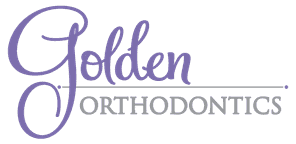The entire history of orthodontics, going back thousands of years, has been a battle between humankind’s inventive intellect and the naturally occurring imperfections of our teeth. Most of us are born with crooked teeth, and our malocclusions can result in some very real, very devastating consequences, both medically and socially.
For thousands of years, some of our best minds struggled to straighten the snaggles in our smiles. And though our imaginations are limitless, we are bound by the technology of our time. So we meddled with metal bands and wires, tinkering, twisting and affixing them until we arrived at modern-day braces.
Today’s braces are a marvel of human ingenuity and continue to be the smile’s best friend. But, even though we've developed ceramic braces and lingual braces to make braces as invisible as possible, the fact remains that today’s braces still have a few drawbacks. First, the metal they require is still visible. This problem is purely aesthetic, but it does make some people hesitant to get the treatment they need, especially adults. Braces also require a slight change in lifestyle. Some foods and snacks, like gum, popcorn and even apples, are forbidden. Keeping braces clean can be difficult because you can’t brush and floss as normal. Finally, braces can sometimes scrape against the tongue and cheeks, causing discomfort.
Ever since plastic came into widespread use last century, orthodontists theorized its application in treating patients. But the great breakthrough came not from an orthodontist, but from two graduate students at Stanford University’s MBA program who had no background in medicine.
Zia Chishti wore adult braces. After his treatment, he was given a clear plastic retainer. Sometimes Chishti would ignore his orthodontist’s advice and go days without wearing his retainer. (I must note that this is a very bad idea.) He noticed that his teeth slowly moved out of place without the retainer, which one would expect. What surprised him was that when he put the retainer back on, his teeth eventually moved back into their proper place. In other words, the plastic retainer wasn't just “retaining” the position of his teeth, it was actually moving his teeth back to that desired position.
Chisthi teamed up with classmate Kelsey Wirth, who had braces in high school and did not reflect kindly upon the experience, and the two founded Align Technologies in 1997. They went to venture capitalists in Silicon Valley with a bold idea: Invisalign.
Advancements in 3D imaging and thermoplastics made possible an entirely different approach to straightening teeth. Invisalign uses 3D imaging to map a patient’s mouth and plot a path for the proper realignment of his or her teeth. Then the patient wears sets of clear plastic aligners that slowly move the teeth, changing sets about every two weeks.
Consider for a moment what a revolution this was in dental technology. There are no standardized parts. Every Invisalign retainer is specially manufactured for the unique mouth of the patient. Every day, I get to treat the great people of the Columbus area. Orthodontists find that inside every unique person is a unique mouth. I approach every treatment plan with that in mind, and the makers of Invisalign share that sentiment.
But the best benefits of Invisalign are seen — or, rather, unseen — in the everyday lives of patients. They truly are virtually invisible. Braces can’t be removed by a patient, but Invisalign aligners can be popped on and off with ease, allowing you to eat whatever you like and to keep brushing and flossing like you normally would. And, unlike braces, Invisalign aligners won’t irritate your mouth as much.
Although Invisalign can be a great alternative to braces, it isn't the best treatment option for everyone. You might be wondering, “How do I know if Invisalign is right for me?” There are many factors involved in making that decision and the answer varies person to person, so you need to find an orthodontist and get a consultation. The good news is, if you need to find an orthodontist in Columbus, we offer free consultations and we’d love to meet you. Just give us a call at (614) 235-4800 or make an appointment online.
If you want to know more about Invisalign, you can look at my page in the about orthodontics section or head over to the Invisalign website, where they have a wealth of information. You should definitely stop by our Facebook page, where you can hear the opinions of other patients or ask any question that’s on your mind.
So, folks. That’s it. We’ve reached the end of our History posts. That History is history. All things considered, 9,000 years in seven posts ain't too shabby.
